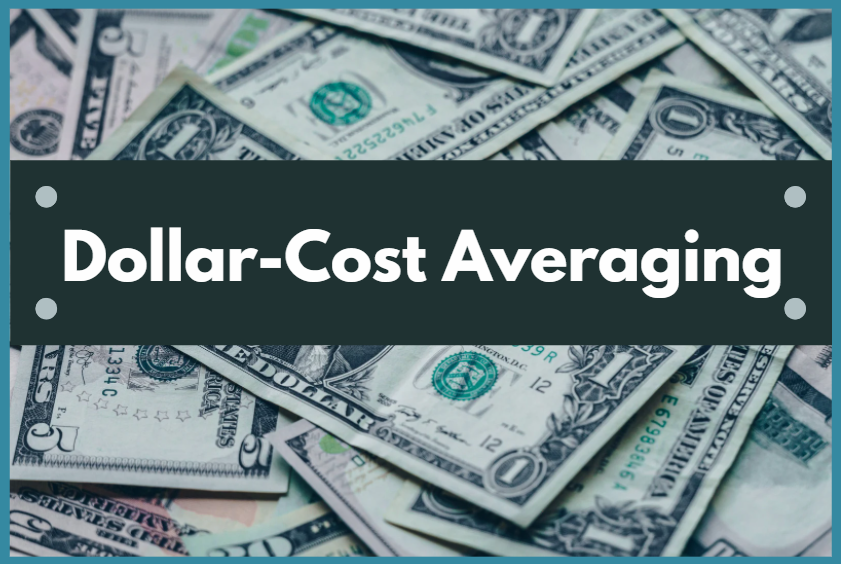Why Dollar-Cost Averaging is an Under-Rated Investment Strategy

“We don’t have to be smarter than the rest. We have to be more disciplined than the rest.”
—Warren Buffett
Investing is not easy. However, at times it might seem that way. That’s because the stock market is cyclical. During “bull” markets, most everything rises…so it’s easy to get lulled into complacency and think that stocks simply go up. At other times in the market cycle, we are reminded that investing is risky, and stocks can lose value. So for financial planning purposes, where does that leave you—is there an investment strategy that makes sense in all markets?
Yes, there is, and it is called Dollar-Cost Averaging. First, let’s take a look at why we need it in the first place.
Managing Emotions is the Hardest Part
Our emotions are not our friends when investing. An old investing adage says, “everyone’s a genius in a bull market.” When things are going well, everyone loves stocks and believes they are good at it. It’s the talk at barbeques and parties. When the tide turns, however, that enjoyment factor disappears. Uncertainty lingers. As time goes by and stocks drop further, most people simply lose interest and stop investing. But when stocks drop, they go on sale. Isn’t that the best time to buy anything?
One Way to Outsmart Your Emotions
The emotions that tell us to stop adding to our holdings when the market drops are strong, but they are not on our side. If we’re long-term investors, history tells us that these bear markets are often the best times to buy. [i] That’s because things are usually the least risky, since people who wanted to sell already did. All that is left is potential buyers.
“You make most of your money in a bear market, you just don’t realize it at the time.”
—Shelby Cullom Davis
That perceived risk in bear markets is the opposite in bull markets. Things tend to feel safe because everyone else owns the same thing. The media talks about your holdings too. But are they safe? Not really, because everyone who wants to buy already has.
Enter Dollar-Cost Averaging
So how can we fight these natural tendencies? We can do it with a system. One such method is Dollar-Cost Averaging.
Here’s how it works:
- Pick a fixed amount you’ll invest every month (for example, $1,000).
- Pick a fixed day of the month to invest (such as the 1st).
- Decide on the investment you want to buy.
Then, you simply purchase that investment using the $1,000 once per month. If the price is low, you’ll buy more shares. If the price is high, you’ll buy less.
And you continue that, month after month. The key is that you can’t adjust anything. You just follow the system. The system creates something magical: discipline.
How Dollar-Cost Averaging Helps
You’ve probably heard that old saying, buy low and sell high? Do you see what you’re accomplishing with this strategy? You are buying low. The lower the price, the more you buy. If the price is up for a month, you automatically buy less.
And here’s the key: you don’t stop. If prices drop in a bear market, you’ll buy more and more as the prices drop.
Does dollar-cost averaging work all the time? No, it is not perfect. If you have a lump sum to invest, such as from a bonus or inheritance, dollar-cost averaging may work against you. And there are other times that it may not be ideal. Still, it is a solid strategy.
Here’s why: research suggests most people need help keeping emotions out of investing. A research firm called Dalbar has been studying investor behavior for decades. They have found that the average investor consistently underperforms the indexes by a wide margin, even when buying ETFs and index funds! [ii]
That’s because investment decisions are unfortunately all too often fueled by greed or panic. Most everyone has had an experience when they panic and sell, only to buy back in later once it seems “safe.” Usually, that is at a much higher price. And to think that people voluntarily line up for Black Friday sales! With stocks, we naturally prefer to pay more. Dollar-cost averaging is one way to help overcome this tendency…as long as you stick to it.
An Even Better Strategy
An even better way? Hire a high-quality financial advisor to help you use systems and sound financial planning to achieve your goals. Research has found that those with professional assistance get better returns even after fees are factored in. [iii] That’s not a surprise since advisors can help you invest more tax-efficiently, manage risk and prevent expensive mistakes.
As you can probably see, the key is to use some type of system to create discipline. Whether it’s working with a financial advisor, dollar-cost averaging, or both, you can help remove the most significant danger to your wealth: your emotions.
Looking for a Checkup on your Investments?
If you’re an Emerald client, just book an appointment and we’d be happy to sit down and review your holdings in depth. Or, if you’re looking for help with your financial planning, contact us to see if Emerald can help you achieve your goals.
[i] (2022) 10 Things You Should Know About Bear Markets. hartfordfunds.com. [online] Available at: https://www.hartfordfunds.com/practice-management/client-conversations/bear-markets.html#:~:text=The%20average%20length%20of%20a,average%20frequency%20between%20bear%20markets.
[ii] Anspach, D. (2021, November 22). Why Average Investors Earn Below Average Market Returns. thebalance.com. [online] Available at: https://www.thebalance.com/why-average-investors-earn-below-average-market-returns-2388519
[iii] Peters, K. (2021, May 19) How Financial Advice Can Boost Your Returns. investopedia.com. [online] Available at: https://www.investopedia.com/articles/personal-finance/102616/how-much-can-advisor-help-your-returns-how-about-3-worth.asp
Disclosure: Emerald Advisors, LLC is a registered investment adviser. Information presented is for educational purposes only and does not intend to make an offer or solicitation for the sale or purchase of any specific securities, investments, or investment strategies. Investments involve risk and, unless otherwise stated, are not guaranteed. Be sure to first consult with a qualified financial adviser and/or tax professional before implementing any strategy discussed herein. Past performance is not indicative of future performance.




